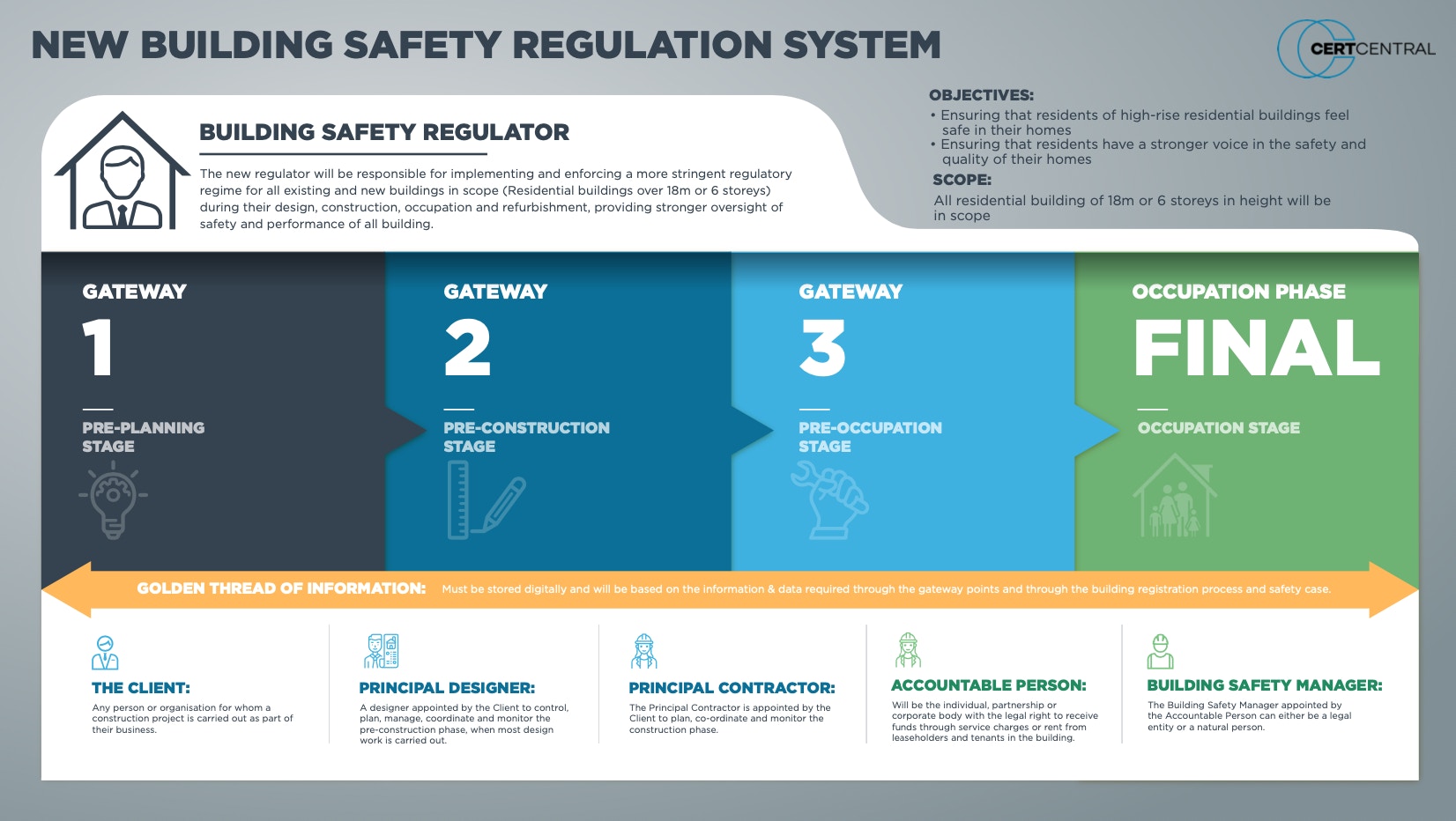



The Building Safety Regulator (BSR) is the official body responsible for enforcing the Building Safety Act. It has the authority to stop or delay construction projects that fail to meet the necessary standards at the various Gateway stages of a development. These Gateways are key checkpoints designed to ensure building safety is prioritised throughout the project lifecycle.
A central component of the Act is the introduction of the Golden Thread - a structured and up-to-date record of information that demonstrates a building’s compliance with safety regulations. This includes how documentation is collected, maintained, stored, and made accessible to those who need it. The Golden Thread aims to create accountability, transparency, and traceability across the design, construction, and management of higher-risk buildings.
For MEP (Mechanical, Electrical, and Plumbing) engineers, the Golden Thread is more than just a regulatory requirement - it’s an essential framework that supports the safe and efficient performance of building systems. MEP teams are uniquely positioned to ensure that critical safety information is accurately documented and integrated into the overall compliance strategy from day one.
The Golden Thread refers to the comprehensive documentation required for every high-rise building over six storeys, as mandated by the Building Safety Act. It ensures that key safety information is collected, maintained, and easily accessible to relevant stakeholders. The Golden Thread encompasses the entire lifecycle of a building, from design to demolition, with the aim of improving transparency and facilitating effective safety management.
According to the recommendations of the 'Building a Safer Future' report by Dame Judith Hackitt, the Golden Thread serves as a digital record that includes essential details such as design specifications, construction information, fire safety measures, and ongoing maintenance records. It enables the right people to access the right information at the right time, enhancing safety and accountability.

MEP engineers have a crucial role in implementing the Golden Thread and ensuring the safety and functionality of building systems. Here are the key responsibilities and contributions of MEP engineers:
MEP engineers are responsible for providing accurate and up-to-date data related to the components they design. This includes information about electrical systems, mechanical installations, plumbing, HVAC, and fire protection systems. Their expertise ensures that these systems meet safety standards and can be properly documented within the Golden Thread.
MEP engineers work closely with other disciplines, such as architects and structural engineers, to ensure the seamless integration of building systems. Collaboration during the design and construction phases is essential to ensure that all relevant information is properly recorded and shared. This collaboration facilitates the smooth implementation of the Golden Thread, as accurate data from MEP systems is crucial for building safety.
MEP engineers must ensure that their designs and installations comply with the latest building regulations and fire safety standards. By staying updated with the requirements set forth in the Building Safety Bill, they can provide the necessary data and documentation for the Golden Thread. This includes fire safety access, maintenance coverage, and other essential aspects of MEP systems.
MEP engineers play a vital role in implementing Building Information Modelling (BIM) coordination. BIM allows for the creation of a digital model that integrates architectural, structural, and MEP systems, providing a collaborative platform for design and construction professionals. MEP engineers contribute to the BIM process by developing accurate 3D models and coordinating with other disciplines to ensure clash-free designs.
Furthermore, MEP engineers utilise the Construction to Operations Building information exchange (COBie) format to manage and deliver digital information related to building assets. COBie provides a standardised format for data exchange, enabling seamless information transfer from the construction phase to the facilities management phase. MEP engineers ensure that the necessary data for the Golden Thread is properly captured and delivered through the COBie format, enhancing the accessibility and usability of building information.

Pre-construction gateways have been introduced to ensure that fire safety is considered right from the design stage of a building project. These gateways are checkpoints during the planning permission stage and aim to address fire safety aspects before construction begins. Gateway One, which came into force on August 1, 2021, requires developers to submit a fire statement as part of their planning permission application. This statement should demonstrate that fire safety has been carefully considered in the design, including aspects such as fire safety access and maintenance coverage.
In addition to pre-construction gateways, actual construction gateways have been introduced to enhance building safety further. Construction gateways provide opportunities for rigorous inspections and checks during the construction process, ensuring that the building meets the required safety standards. MEP engineers play a vital role in the success of construction gateways by:
MEP engineers ensure that the MEP systems are installed in accordance with the approved design and specifications. They collaborate with contractors and conduct regular inspections to verify compliance with safety standards and ensure proper integration into the overall building systems.
MEP engineers contribute to the accurate documentation of the construction process, including as-built drawings, test certificates, and commissioning reports. These records are vital components of the Golden Thread and provide crucial information for ongoing maintenance and future renovations.
At EDC, we recognise the significance of the Golden Thread and the role of MEP engineers in implementing this framework for building safety. As a global MEP consultant, we are committed to providing accurate data, ensuring compliance with regulations, and contributing to the seamless integration of MEP systems within the Golden Thread.
Our expertise in BIM coordination enables us to collaborate effectively with other disciplines, ensuring the completeness and accuracy of information. We understand the importance of the pre-construction and construction gateways, as well as the digital management of information through COBie, and are dedicated to delivering projects that meet the highest safety standards. By partnering with EDC, you can be confident in achieving safe and well-documented high-rise buildings that comply with the Golden Thread requirements.
EDC has a dedicated team specialising in digital information management and BIM design. We understand the importance of The Golden Thread and the role information management plays in this. If you would like to discuss The Golden Thread and our services offered please contact Baris Canpolat EDC's Digital Process Lead.